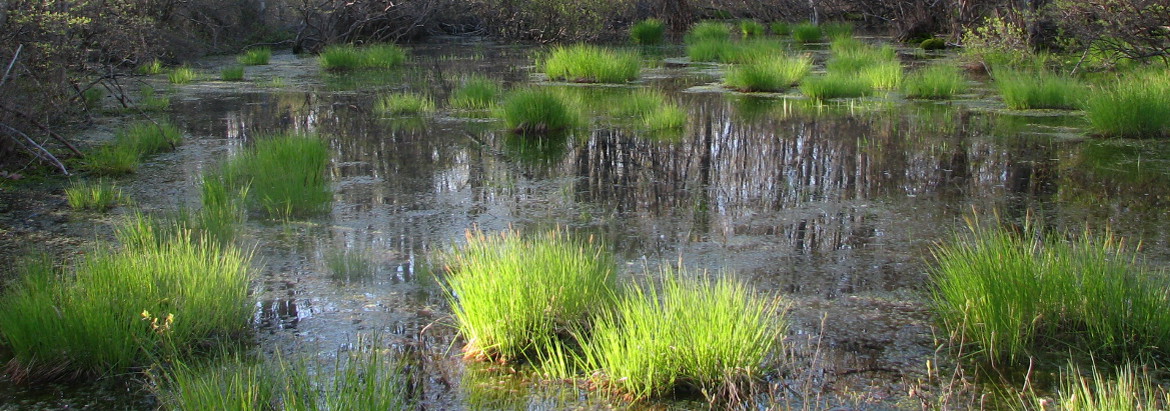 Vernal Pool Threats
Vernal Pool Threats
Vernal pools are small, sensitive wetland habitats that can easily be disturbed or destroyed by human activities. The kinds of plants and animals that can use a wetland are dictated by the environmental conditions. Important environmental factors include seasonal temperatures, rainfall (timing and amount), ground water levels, and land use around the pool. Several key threats to vernal pool habitats are discussed below along with some conservation recommendations. Best management practices that minimize threats to vernal pool habitats are discussed further in the Conservation and Management section.
Seasonal pools are often not identified as wetlands due to their temporary nature. Pools that are not identified cannot be protected during development activities that would alter or destroy them. Some estimates state that over 50% of the wetlands in the United States have been lost since European settlement (Vileisis 1997), and likewise over half of all wetland habitat in Pennsylvania occurring historically has been filled (Myers et al. 2000). The rate at which seasonal pools have been lost is likely even greater considering that these areas are often overlooked. Filling seasonal pools, deepening them into permanent fish ponds, and disturbances to the vegetation and soil around pools from agriculture, building and road construction, quarries, and logging operations lead to direct mortality of animals and habitat destruction or degradation.
Vernal pool habitat extends beyond the pool basin. Young vernal pool animals start out living in water but they turn into adults that live on land. They must leave the pool before it dries up or else they will perish. Each new generation of adults leaves the pool and seeks a place to live on land. During the many months that a vernal pool is dry, adult amphibians find food and shelter in the surrounding upland forest. They live underground or near the surface under rocks, rotting logs, and the moist layer of leaves on the forest floor.
The Environmental Protection Agency recommends managing a 1000 foot radius area beyond the edge of a vernal pool basin as vernal pool upland habitat (Brown and Jung 2005). This distance is based on scientific studies of animal movement. Vernal pool animals do best in upland habitats that are relatively natural habitats such as forests and uncultivated fields. As the uplands are turned into agricultural lands, developments, lawns, golf courses, roads, and the like, the adults have fewer suitable places to live. The smaller the patch of natural habitat around a pool, the less food and shelter is available.
Fragmentation of the landscape by various human activities destroys or reduces the amount of habitat available to vernal pool animals and reduces their ability to find and colonize new habitats. Roads are a common form of habitat fragmentation, even in relatively undeveloped areas. And roads near seasonal pools present a physical obstacle to animals moving from their upland feeding habitats to their seasonal pool breeding habitats. Many animals are killed as they attempt these crossings. The presence of roads also provides opportunities for undesirable elements to get into the pools. Roads bring invasive plant species, sediments, and contaminants to pools through runoff. During the winter the application of road salt poses a problem for pools located near roads. As the snow melts, salt-laden water flows into these pools and increases the salinity of the water, making the water less hospitable to wildlife.
Development of extensive agricultural, urban and suburban areas also creates biological 'islands' of isolated natural areas. It can be difficult for animals to move long distances across unsuitable habitat such as open lawns and parking lots and to navigate large obstacles such as highways and fences. Some highly mobile animals are able to disperse over these obstacles. Other more sessile animals are unable to move great distances from their preferred habitat. For those species that can travel large distances, there is increased risk that they will not be able to find suitable habitat at the end of their journey in a fragmented landscape with diminished habitat.
Just as habitat fragmentation isolates a group of animals on an island of habitat; it also isolates the gene pool collectively held by that group of animals. When animals cannot make contact with other populations, inbreeding within one population takes place. This means there is no gene flow between populations and genetic diversity is lost. As genetic diversity is lost, the ability of that population to adapt to changes in the environment is reduced. This increases the chances that the population will not be able to survive over the long-term.
Fragmentation around vernal pools can be lessened with land use planning. First, vernal pools and their upland habitat need to be identified and mapped. Then corridors can be designated to ensure long-term connectivity between vernal pools and other patches of forest and wetlands.
Alterations to the natural water regime change many habitat parameters such as inundated area and depth, length of inundation, temperature, dissolved oxygen levels, and types and amounts of vegetation in and around the aquatic habitat. All of these factors are important in proper development of aquatic eggs and larvae. There are several common causes of altered pool hydrology. Increased water demand from nearby developments can lead to decreased water tables and decreased water retention in seasonal pools. Deepening of pools to increase their water retention is a common practice in agricultural settings. This usually changes a pool from seasonal to permanent aquatic habitats and changes the plant and animal species that can live there. Logging of forests near pools can change the water table with the loss of trees and can alter water flow patterns with the creation of logging roads and ruts. See the Conservation and Management section for recommendations on how to minimize negative impacts during logging.
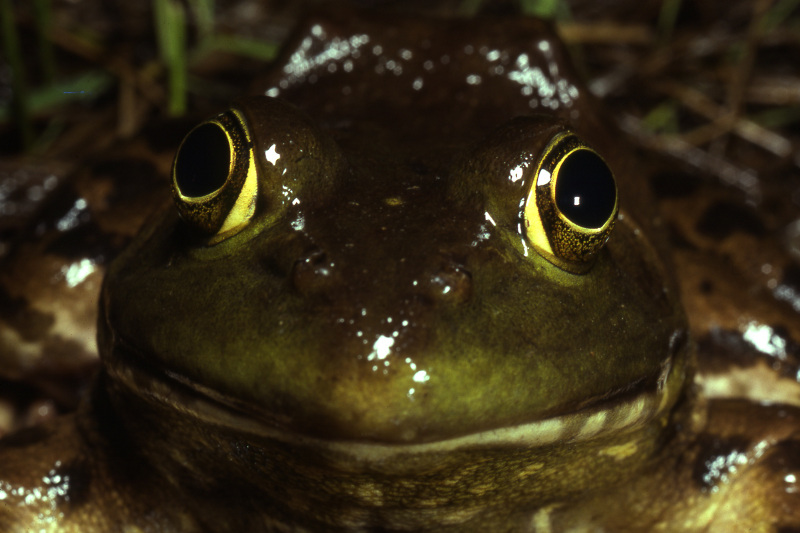
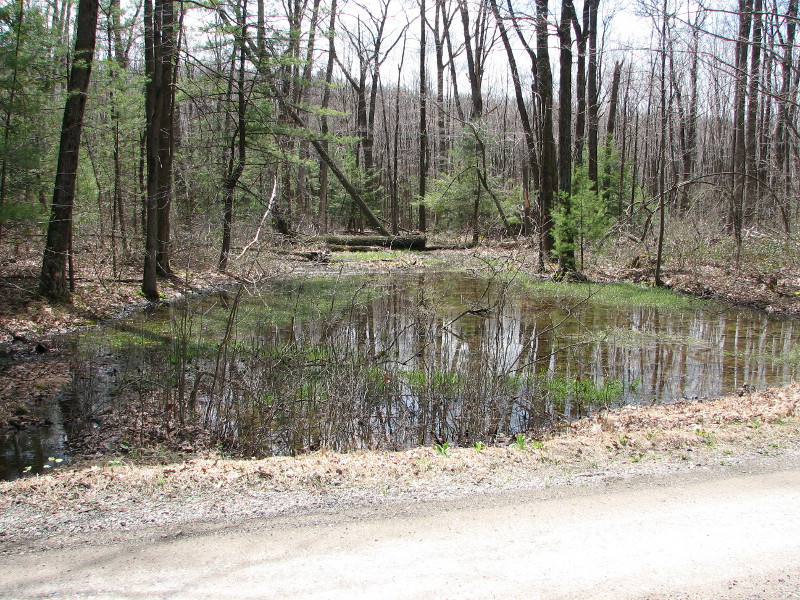
Many human activities have degraded water quality in aquatic habitats. Agricultural runoff is a major source of pollutants in Pennsylvania where there are abundant farmlands. Agricultural runoff is generated as rainwater flows through fields that have been treated with fertilizers, herbicides, and insecticides, and through livestock pastures and feedlots, washing the waste into local aquatic systems.
Suburban and urban runoff comes from rainwater that flows off rooftops, down streets and parking lots, through industrial zones and garbage disposal sites, and through lawns and golf courses treated with various chemicals. This runoff contains sediments, garbage, road salt, oil, pesticides, herbicides, and a whole mixed bag of other household and industrial chemicals.
Testing for a variety of synthetic chemicals and heavy metals that can be toxic to wildlife is an important part of water quality monitoring. Other important variables used to monitor water quality include temperature, pH, dissolved oxygen, sediment load, nutrient levels such as nitrates and phosphates, and bacterial and algal levels. The types of plants and animals found living at a site can also be used to evaluate water quality. Certain species are very tolerant of poor water quality, while others will only be found in clean habitats. The types of plants and animals living at a site can be monitored for change over time. If species intolerant of pollution disappear from a site, and species tolerant of pollution increase, this is an indication that there is a problem with water quality.
Seasonal pool animals are adapted to the relatively high acidity levels naturally found in seasonal pools, but they have tolerance limits. Increased acidification of seasonal pools takes place due to acid rain. In a review of literature, Hulse et al. (2001) describe one study that showed that embryos living inside eggs of spotted and Jefferson salamanders experience higher mortality at lower (more acidic) pH values. In a lab setting, no hatching occurred at pH values below 4.5. Another study showed that natural pools that supported Jefferson salamanders had significantly higher (less acidic) pH values than pools that did not. Other studies on spotted salamanders found that increased acidity can deform egg membranes and developing embryos and produce a decrease in hatching success and higher levels of larval mortality (Hulse et al. 2001).
The term substrate is used here to refer to the bottom of a seasonal pool. Substrate requirements can be quite specific for seasonal pool animals. The amount and composition of materials such as leaves, woody debris, and muck are important factors. The substrate can be altered by activities such as dumping, dredging and filling. Driving machinery or off road recreational vehicles through dry pool basins can easily damage soils and harm wildlife hiding under the leaf litter. Gradual non-point effects from runoff can also change substrate. For example, surface runoff from agricultural fields carries fine sediments. The silt can be deposited into nearby seasonal pools and eventually fill the pool basin. There are many sediment and erosion controls that can be implemented to reduce the amount of sediments that flow into waterbodies from dirt roads, fields, and other areas where the earth has been disturbed.
In-pool and upland vegetation are an important part of the seasonal pool habitat. Removal or change in composition of vegetation in and around a pool affects which species can use the pool. For species that lay their eggs in plant material, loss of vegetation eliminates egg-laying sites. For species that lay their eggs in the water, removal of vegetation reduces shade. This causes water temperatures and evaporation rates to increase. These effects are particularly noticeable in small wetlands like seasonal pools.
Changes in vegetation from one type to another happen naturally after forest fires and storms. Most vernal pools in Pennsylvania are surrounded by forest, but some are located in an opening of some type within the forest. Vernal pools that occur in woodlands with gaps in the tree canopy, small forest clearings, shrublands, and old fields can support plants and animals that require more light. Human intervention may be necessary to keep these habitats open. People can create and maintain partial or complete openings around or near vernal pools through carefully planned tree cutting and/or infrequent mowing. Changes to the vegetation should be made with great care with respect to the vernal pool habitats and species found there (see the Conservation and Management section for more information). Sites with multiple vernal pools may be ideal for management in a variety of settings, from partially open to heavily forested areas, to encourage diversity.
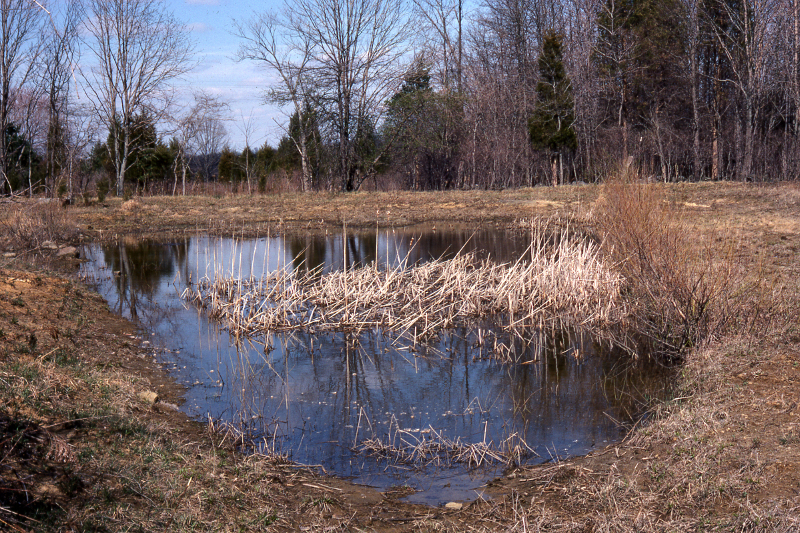
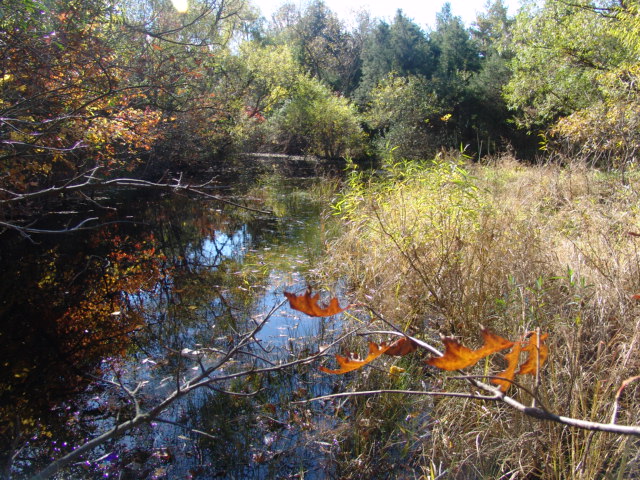
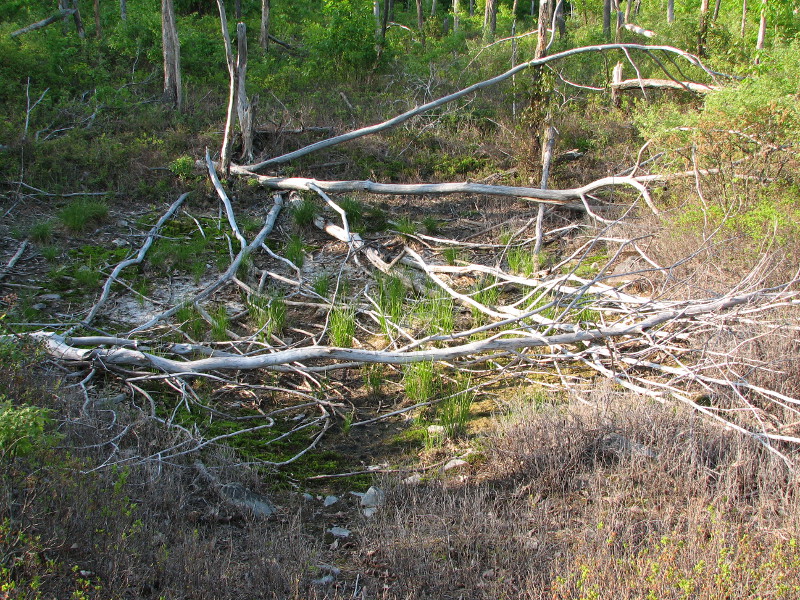

Use of certain pesticides and herbicides in and around seasonal pools can disrupt the balance that is necessary between predators and their prey. Larval and adult seasonal pool animals feed on the smaller animals that share their environment such as mosquitoes, midges, gnats, and other flies. Predators such as amphibian larvae and insects such as dragonfly and diving beetle larvae and adults help control the insect species that are considered pests. However, when homes encroach upon wetland habitats, municipalities and homeowners often take measures to control mosquitoes and other nuisance insects. The pesticides used to control these pests have many negative effects on non-target species. Direct mortality of all insect species occurs when broad-based killing agents are used. More specific killing agents are available that only harm black flies or mosquitoes, but they indirectly affect the predators by decreasing the availability of their food.
Encouraging natural predators such as birds and bats by installing nesting and roosting boxes for them next to vernal pools is one environmentally friendly way to increase pest control. Many homeowners overlook mosquito breeding sites around the yard that are most likely to be the source of annoying bites. Cleaning rain gutters frequently, refreshing bird baths, and keeping flower pots and other plastic containers free of standing water, should be the first line of defense in controlling mosquitoes.
All aspects of life in a seasonal pool, from amphibian migration to egg and larval development to adult feeding, thermoregulation, and reproductive success, depend on certain environmental cues and conditions. For example, the migration of salamanders to seasonal pools is in response to environmental cues. One study showed that salamander migrations started when evening rains occurred with moderate temperatures over 44.6 F during the day and over 40 F at night (Hulse et al. 2001). In Pennsylvania, migrations can start as early as the end of February and as late as the beginning of April depending on local temperatures and rainfall.
While predictions of climate change do not agree on the details, evidence shows that changes in average yearly temperatures, minimum and maximum temperatures, rainfall amounts, and other environmental changes are occurring. These changes are having an effect on wildlife, which respond more quickly to environmental changes than humans, who are able to create a favorable stable environment inside their home.
There is already evidence that the geographic ranges of plants and animals have been shifting in response to changes in climate. Climate change is of increasing concern for species of special concern, especially in regard to species that are geographically restricted (Westfall and May 1996).






